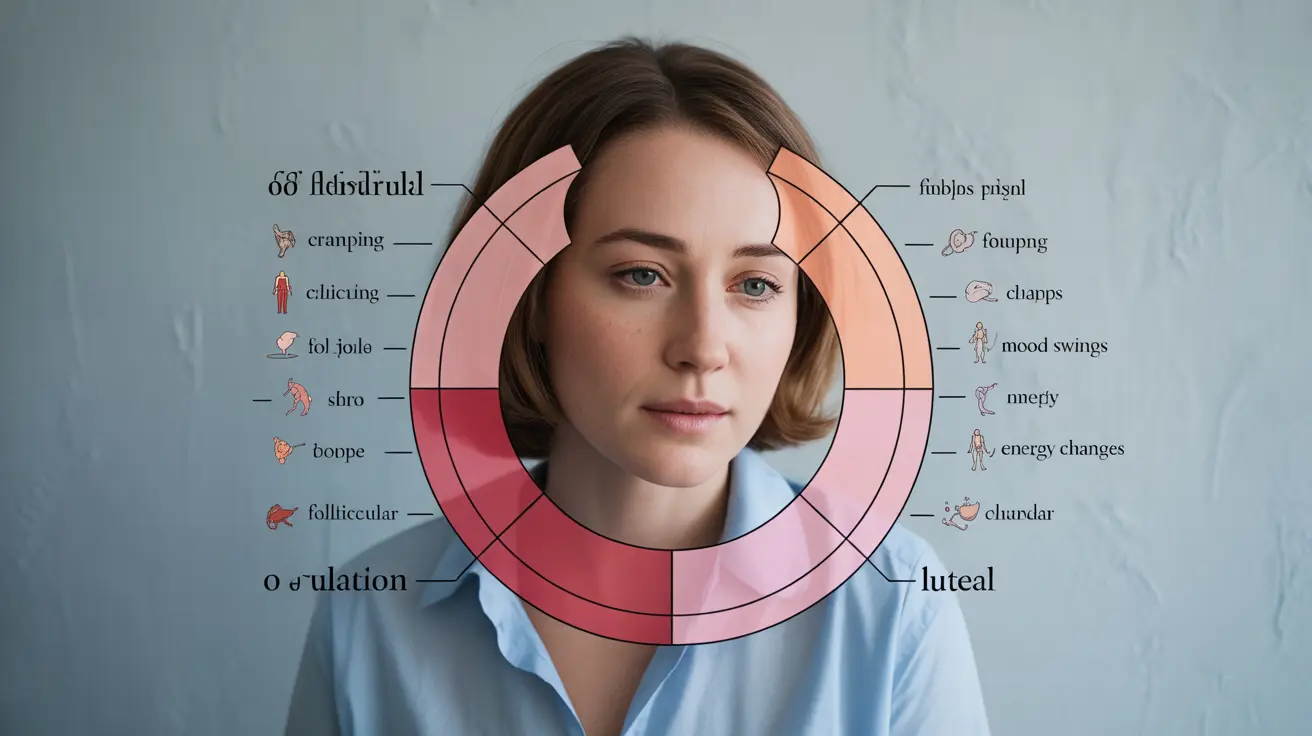The menstrual cycle is a complex biological process that affects women's physical and emotional well-being throughout their reproductive years. Understanding the different phases and associated symptoms can help you better manage your health and recognize when changes might need medical attention.
This comprehensive guide will explore the distinct phases of the menstrual cycle, common symptoms you may experience, and how to distinguish between normal variations and potential health concerns.
The Menstrual Phase (Days 1-5)
The menstrual phase marks the beginning of your cycle when the uterine lining sheds. During this time, you may experience:
- Cramping in the lower abdomen
- Lower back pain
- Fatigue and mild headaches
- Light to heavy bleeding
- Mood changes
These symptoms typically last 3-7 days, though the duration can vary among individuals. Many women find relief through over-the-counter pain medications, heat therapy, and gentle exercise.
The Follicular Phase (Days 1-13)
Overlapping with menstruation, the follicular phase involves the development of egg-containing follicles in the ovaries. During this time, your body experiences several changes:
- Rising estrogen levels
- Increased energy and mood improvement
- Enhanced skin clarity
- Growing endometrial lining
- Cervical mucus changes
This phase can last between 11-27 days, with 13 days being average. Hormonal fluctuations during this time can affect your energy levels and emotional state.
The Ovulation Phase (Day 14)
Ovulation occurs when a mature egg is released from the ovary. Key indicators include:
- Clear, stretchy cervical mucus
- Mild cramping on one side (mittelschmerz)
- Increased sex drive
- Slight body temperature rise
- Breast tenderness
This phase typically happens around day 14 in a 28-day cycle, though timing can vary significantly among women and between cycles.
The Luteal Phase (Days 15-28)
The final phase of your cycle brings distinct hormonal changes and potential premenstrual syndrome (PMS) symptoms:
- Mood swings
- Breast tenderness
- Bloating
- Food cravings
- Fatigue
- Acne breakouts
This phase usually lasts 14 days and ends with the start of your next menstrual period.
Tracking Your Cycle
Monitoring your menstrual cycle can help you:
- Identify your typical pattern
- Predict upcoming phases
- Recognize unusual changes
- Plan activities around your cycle
- Better manage symptoms
Consider using a period tracking app or maintaining a symptom diary to better understand your personal patterns.
Frequently Asked Questions
What are the main phases of the menstrual cycle and what symptoms can I expect during each phase?
The four main phases are menstrual, follicular, ovulation, and luteal. Each phase has distinct symptoms ranging from bleeding and cramping during menstruation to energy changes during the follicular phase, mild pain during ovulation, and PMS symptoms in the luteal phase.
Why do I experience cramps, mood swings, and fatigue at different times in my menstrual cycle?
These symptoms occur due to hormonal fluctuations throughout your cycle. Prostaglandins cause cramps during menstruation, while varying levels of estrogen and progesterone influence mood and energy levels during different phases.
How can I tell if my menstrual cycle symptoms are normal or a sign of a health problem?
Normal symptoms should be manageable and follow a relatively consistent pattern. Seek medical attention if you experience extremely heavy bleeding, severe pain, irregular cycles, or symptoms that significantly impact your daily life.
What changes happen in the body during ovulation and how can I recognize its symptoms?
During ovulation, your body releases an egg and experiences increased fertility. Common signs include clear cervical mucus, mild cramping, increased libido, and a slight rise in body temperature.
How long does each phase of the menstrual cycle typically last, and can the length vary from person to person?
While a typical cycle is 28 days, normal cycles can range from 21-35 days. The menstrual phase usually lasts 3-7 days, the follicular phase 11-27 days, ovulation about 24 hours, and the luteal phase typically 14 days. These lengths can vary between individuals and cycles.




